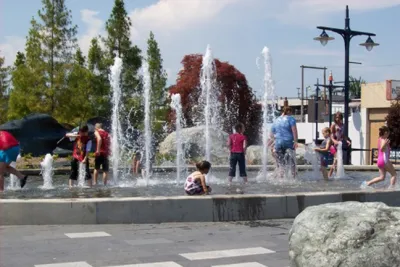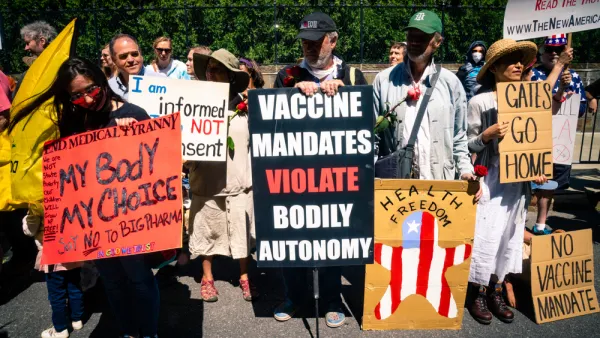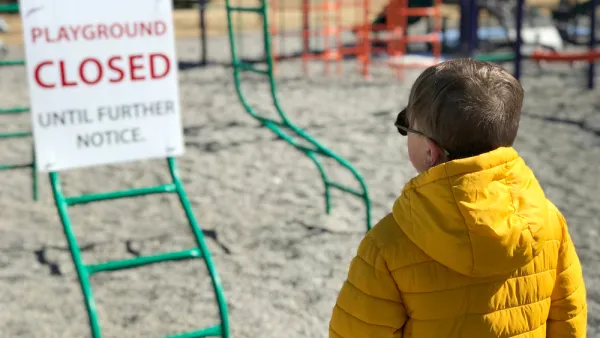The "Using Behavioral Economics to Create Playable Cities" report suggests that so much time spent in front of screens, and the continued need to counter the obesity epidemic, requires new thinking about play for children living in cities.

Rachel Dovey shares news of a report by KaBOOM about how to build "playable cities" [pdf]. The idea is presented as an alternative to traditional play areas, which are lacking or underutilized in many places.
Here's how Dovey describes the idea put forward by the report: "Instead of setting spaces aside for play, why not integrate them into the streets, sidewalks and bus stops people use every day? If the park isn’t a destination — if it’s a bus stop in the shape of the word BUS that kids can lounge, jump and slide on — then they end up playing during their daily commute. And quick-access structures integrated into city streets could both keep families from leaving for the suburbs and encourage them to bike, walk and take the bus instead of driving cars."
To make that argument, the report "delves into some of the psychological barriers that can also limit access, using a lens called 'behavioral economics' to see 'how people make decisions in a complex and textured world where details matter.'"
FULL STORY: For Family-Friendly Cities, Build Play Beyond the Playground

National Parks Layoffs Will Cause Communities to Lose Billions
Thousands of essential park workers were laid off this week, just before the busy spring break season.

Retro-silient?: America’s First “Eco-burb,” The Woodlands Turns 50
A master-planned community north of Houston offers lessons on green infrastructure and resilient design, but falls short of its founder’s lofty affordability and walkability goals.

Delivering for America Plan Will Downgrade Mail Service in at Least 49.5 Percent of Zip Codes
Republican and Democrat lawmakers criticize the plan for its disproportionate negative impact on rural communities.

Test News Post 1
This is a summary

Test News Headline 46
Test for the image on the front page.

Balancing Bombs and Butterflies: How the National Guard Protects a Rare Species
The National Guard at Fort Indiantown Gap uses GIS technology and land management strategies to balance military training with conservation efforts, ensuring the survival of the rare eastern regal fritillary butterfly.
Urban Design for Planners 1: Software Tools
This six-course series explores essential urban design concepts using open source software and equips planners with the tools they need to participate fully in the urban design process.
Planning for Universal Design
Learn the tools for implementing Universal Design in planning regulations.
EMC Planning Group, Inc.
Planetizen
Planetizen
Mpact (formerly Rail~Volution)
Great Falls Development Authority, Inc.
HUDs Office of Policy Development and Research
NYU Wagner Graduate School of Public Service




























